Contents
Tulip
Tulips are one of the world’s most beloved types of flowers. A tulip is a spring-blooming bulbous plant known for its bright, cup-shaped bloom held on a slender green stem above broad strap-like leaves. Originally native to parts of Eurasia, tulips have been cultivated for centuries and now include thousands of hybrid varieties. They belong to the lily family and have become a quintessential symbol of spring in many cultures.
Tulips come in almost every color-from golden yellow flowers and pure white flowers to deep crimson red flowers-making them popular in gardens and floral arrangements for all occasion flowers. Each tulip bulb typically produces a single elegant bloom, creating a vivid display when planted in groups. Whether in a formal bed or a casual cottage garden, tulips are cherished worldwide for their vibrant colors and the cheerful presence they bring to the landscape.
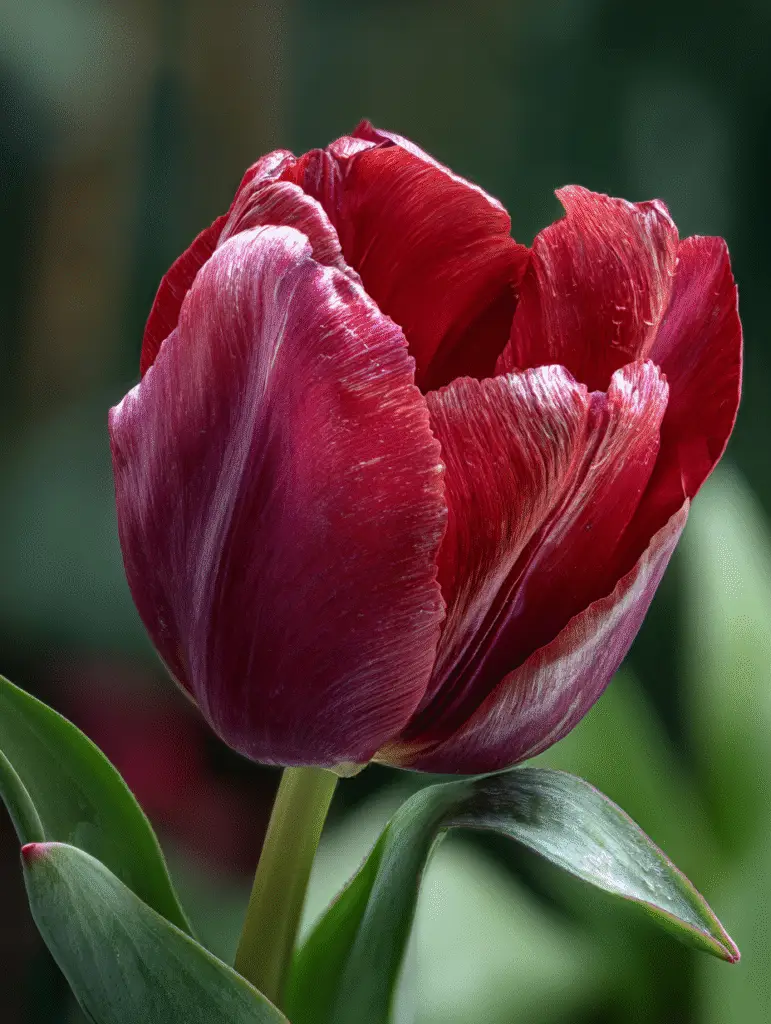
🌱 Taxonomy and origin
The tulip belongs to the genus Tulipa in the lily family (Liliaceae). There are around 75 wild species of Tulipa (some sources cite up to 100), native to a vast region stretching from southern Europe and North Africa across the Middle East to Central Asia. These hardy bulbous perennials were first cultivated by gardeners of the Ottoman Empire and prized for their elegant blooms. Tulips were introduced to Western Europe in the 16th century, notably spreading to the Netherlands where they became immensely popular. This led to the famous “Tulip Mania” in the 17th century, one of the earliest economic bubbles, reflecting how coveted tulip bulbs had become. Today, tulips are grown commercially worldwide, with the Netherlands still producing a large percentage of the world’s supply for gardens and florists. The scientific name Tulipa is derived from a Persian word for “turban,” alluding to the flower’s turban-like shape when in bloom.
🌸 Bloom time
Tulips are classic spring bulbs that bloom once the weather begins to warm after winter. In most regions, tulips flower in spring between March and May. The exact bloom time depends on the variety and local climate – some early tulip varieties can open in late March or early April, while late-blooming types may not flower until May. Gardeners often plant a mix of early, mid, and late-season tulip varieties to enjoy continuous waves of color throughout the spring months. Tulip blooms typically last for a couple of weeks in cool weather, but higher temperatures can shorten the flowering period. After blooming, the petals drop and the plant directs its energy back into the bulb for the next year’s cycle, entering dormancy by early summer.
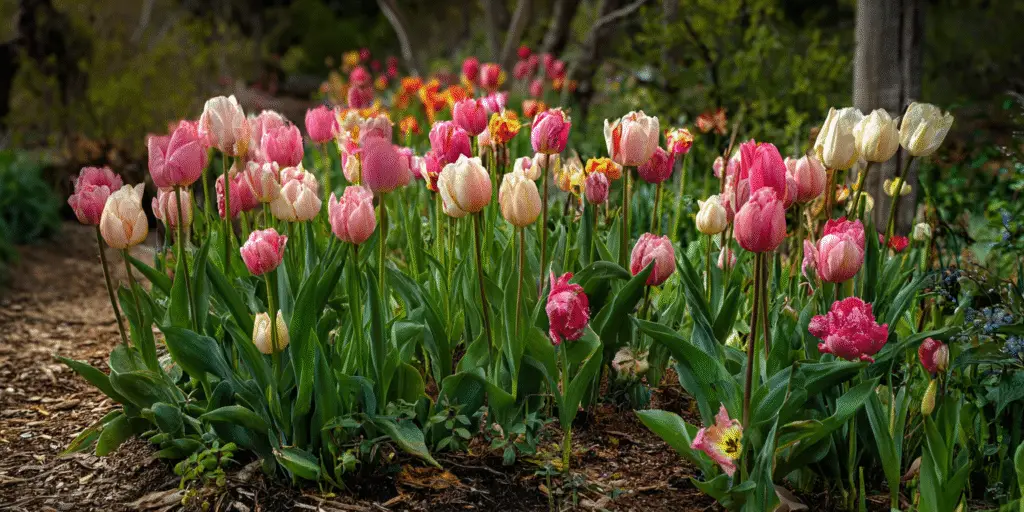
📏 Height and spread
Tulip plants vary in height depending on the species or cultivar. Dwarf botanical tulips may only reach 4-6 inches tall (about 10-15 cm), while taller garden hybrids like Darwin or Triumph tulips can stand 18-24 inches (45-60 cm) high or more. Most standard tulip cultivars range around 12-20 inches in height (30-50 cm), making them prominent enough to stand out in flower beds without overpowering surrounding plants. Each tulip bulb produces a single flowering stem with a few slender leaves at the base. The “spread” of a tulip plant is minimal – a single tulip doesn’t branch outward like a shrub. When gardeners refer to spread for tulips, they usually mean the spacing between bulbs. It’s best to plant tulip bulbs in clusters about 4-6 inches apart (10-15 cm) so the flowers form a full, grouped display. Over time, a healthy bulb can produce small offset bulbs around it, gradually forming a thicker clump, but tulips do not creep or spread aggressively on their own.
☀️ Light
Tulips thrive in full sun conditions. They perform best with at least 6 hours of direct sunlight per day during their growing and blooming season. A sunny location encourages strong stems and vibrant blooms. In cooler spring weather, full sun helps the soil warm and dry out properly, which is beneficial for these bulbs. Tulips can tolerate partial shade, especially in hotter climates where some afternoon shade might protect them from excessive heat. However, too much shade will result in taller, weaker stems and fewer blooms, as the plants stretch for light. Ideally, plant tulips in a spot that gets plenty of morning and midday sun. Because tulips complete their growth cycle in spring before many trees fully leaf out, even a garden area under deciduous trees can work if it’s sunny in early spring. Just ensure that adjacent plants or structures do not cast heavy shade on the tulips during their critical growing period.
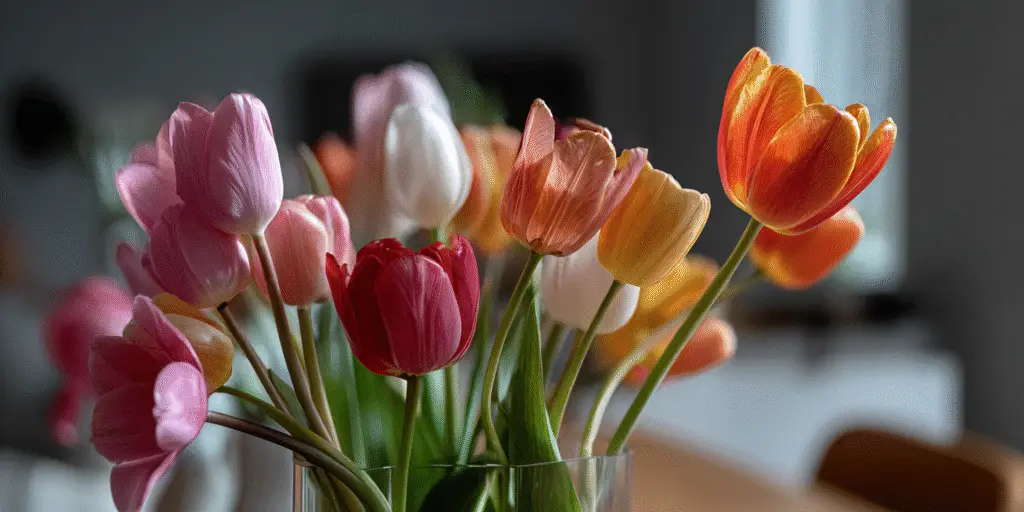
💧 Water
Moderate moisture is key for tulips. In spring, when tulips are actively growing and blooming, they prefer consistently moist but not waterlogged soil. Generally, spring rainfall provides sufficient water, but during unusually dry spells, a gentle watering once a week will help. The soil should be kept damp to a depth of several inches while the plants have green leaves. Good drainage is essential – tulip bulbs will rot if they sit in waterlogged or soggy soil for long. Avoid overwatering, especially in heavy clay soils that hold water. Once the blooming period is over and the foliage begins to yellow in late spring to early summer, reduce watering significantly. Tulips enter a dormant phase after flowering and actually prefer dry conditions during summer. In fact, many gardeners lift and store tulip bulbs for the summer in areas with very wet or humid summers to prevent rot. If bulbs remain in the ground, be sure that the garden bed doesn’t receive excessive irrigation in the off-season. A layer of mulch can help retain just enough moisture in spring and then keep the soil drier in summer, mimicking the tulip’s native climate where winters and springs are moist and summers are dry.
🌍 Soil and pH
Well-drained soil is critical for growing tulips successfully. These bulbs prefer a loose, sandy or loamy soil that allows excess water to drain away. In heavy clay or compacted soils, tulips will struggle unless amendments (like compost, leaf mold, or coarse sand) are added to improve aeration and drainage. A moderately fertile soil works well – overly rich soil with high nitrogen can cause lush foliage but fewer blooms. When it comes to soil pH, tulips do best in neutral to slightly acidic soil, roughly in the pH range of 6.0 to 7.0. They are fairly adaptable and will tolerate slightly alkaline soils as well (some gardens with pH 7.5 still grow tulips successfully), but extremely acidic soil (far below pH 6) may need liming for optimal growth. If unsure about your soil’s acidity, a simple soil test can help determine if any adjustments are needed. In practice, as long as the soil is well-drained and not extreme in pH, tulips are not overly fussy. Adding some organic matter when planting bulbs can improve soil structure and provide balanced nutrients, helping to support strong roots and blooms.
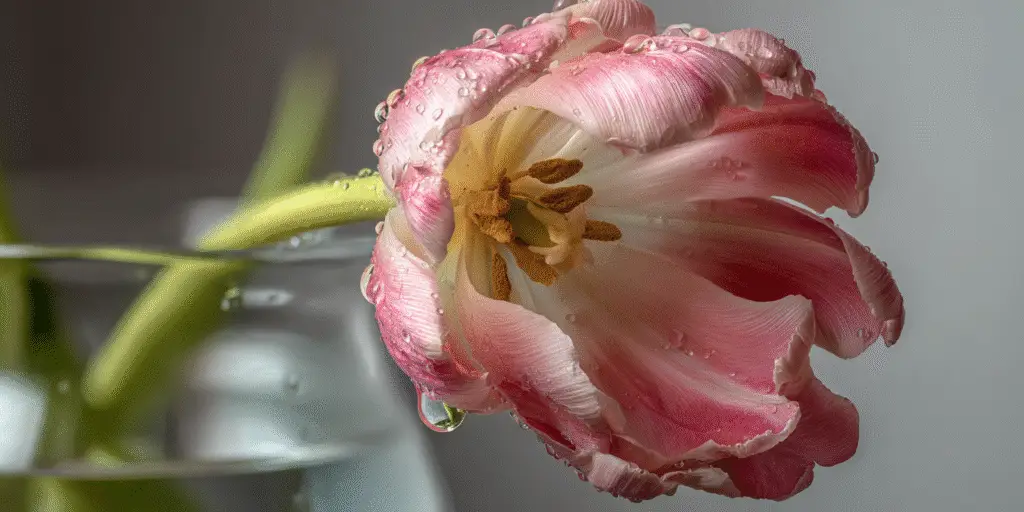
❄️ USDA hardiness
Tulips are hardy in regions with cold winters. Most tulip varieties thrive as perennials in USDA Hardiness Zones 3 through 7. These areas provide the chilly winter temperatures (below about 45°F or 7°C) that tulip bulbs require for their dormancy and flower formation. In zones 3-7, gardeners can plant tulip bulbs in autumn and expect them to survive the winter and bloom in spring year after year (though in practice, many hybrid tulips bloom best the first spring and less in subsequent years). In warmer regions, specifically zones 8 through 10, tulips can be grown but often need special treatment. The winters in these zones may not be cold enough for long enough to meet the bulbs’ chilling requirement. As a result, many gardeners in mild winter climates treat tulips as annuals – planting pre-chilled bulbs each fall for a spring display, then replacing them the next year. Alternatively, bulbs can be dug up and refrigerated for 8-10 weeks each winter to simulate the cold period before replanting. A few species tulips (and certain hybrid varieties) are more heat-tolerant and may perennialize in zone 8 with excellent drainage and dry summer conditions, but consistent rebloom in warm climates is not guaranteed.
🌼 Propagation and longevity
Tulips are most commonly propagated by bulbs. Gardeners plant tulip bulbs in the fall, usually around September to November (about 6-8 weeks before the ground freezes), so the bulbs can establish roots before winter. Each healthy bulb contains the embryonic flower for the next spring. When planting, bulbs are placed pointed end up, about 6-8 inches deep (15-20 cm) in the soil, and spaced a few inches apart. Over the years, a tulip bulb can produce smaller offset bulbs (sometimes called “daughter” bulbs) attached to its base. These offsets can eventually grow to flowering size in a few seasons. Gardeners who wish to propagate their tulips can dig up bulbs after the foliage has died back and separate these offsets, replanting them in a favorable spot. Patience is required, as offsets may take 2-3 years or more to bloom. Tulips can also be grown from seed, but this method is used mainly by breeders – seeds can take five or more years to develop into a flowering bulb and the offspring often differ from the parent plant.
In terms of longevity, many modern hybrid tulips are often treated as annuals in practice. They tend to bloom most spectacularly in their first spring after planting. In subsequent years, the original bulb often splits into smaller bulbs that might not all have enough energy to bloom, leading to fewer or smaller flowers. Some gardeners choose to replant fresh bulbs each fall for consistent results. However, certain types of tulips are known for better perennial performance. Darwin hybrid tulips, species tulips, and Kaufmanniana or Greigii tulips (early blooming botanical types) are among those that can return for several years if conditions are ideal. Providing proper care – such as letting the foliage fully die back to feed the bulb, and planting bulbs somewhat deeper (8-10 inches) – can improve the chances of tulips reblooming annually. In the right spot, a clump of perennial tulips can persist and even multiply gradually, offering spring color for many years.
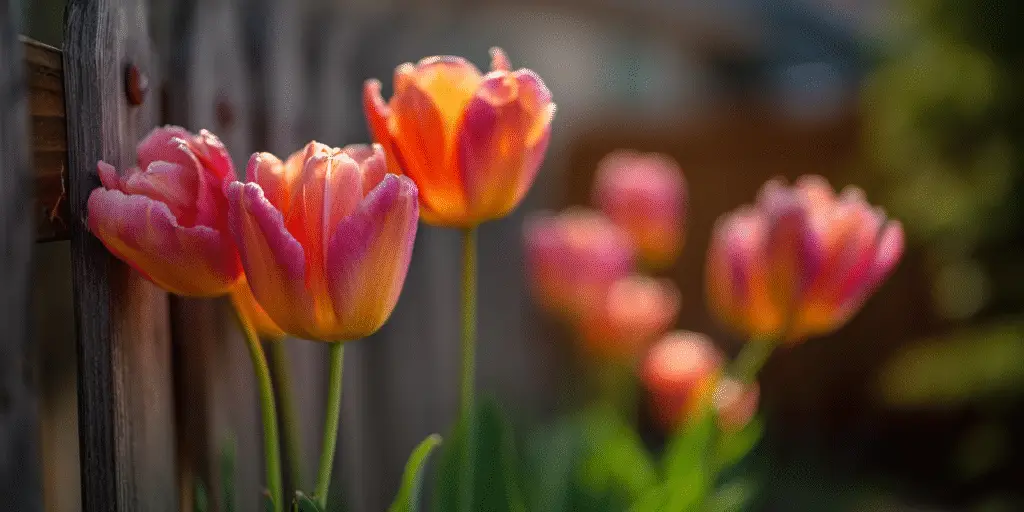
👃 Fragrance
Fragrance is not the foremost trait of tulips, as the majority of tulip varieties are only mildly scented or have no noticeable fragrance at all. Most gardeners grow tulips for their brilliant colors and forms rather than for perfume. That said, a few tulip cultivars and species do offer a pleasant scent. Some double early tulips and Fosteriana tulips, for example, have been noted to carry a light sweet fragrance. Tulipa sylvestris (the woodland tulip) is one species known for its sweet scent. Generally, any fragrance that tulips have is subtle – you might need to put your nose close to the bloom to detect it. Unlike strongly perfumed flowers such as roses or lilies, a bed of tulips will not typically perfume the air. If fragrance is a goal in a spring garden, gardeners often pair tulips with other spring-blooming flowers like hyacinths (which have a strong sweet scent) so that the visual impact of tulips can be enjoyed alongside more fragrant companions. In cut flower arrangements, tulips add color and elegance, but they will not usually contribute much scent to a bouquet.
⚠️ Toxicity and pet safety
Tulips contain chemical compounds (particularly tulipalin A and B) that make them toxic to pets and irritants to humans. All parts of the tulip plant are considered poisonous to cats, dogs, and other common domestic animals, but the highest concentration of the irritants is found in the bulbs. If a pet digs up and chews on tulip bulbs – or even munches on the leaves or flowers – it can experience symptoms such as drooling, vomiting, diarrhea, and general gastrointestinal distress. In severe cases (especially if a large amount of bulb material is eaten), pets might show signs of depression or other nervous system effects that require veterinary care. It’s wise to plant tulip bulbs out of reach of curious pets or use physical barriers if necessary. When handling tulip bulbs, some people may develop skin irritation or an allergic reaction known as “tulip fingers” – a form of contact dermatitis caused by the bulbs’ compounds. Wearing gloves when planting or handling large quantities of bulbs is a good precaution for those with sensitive skin.
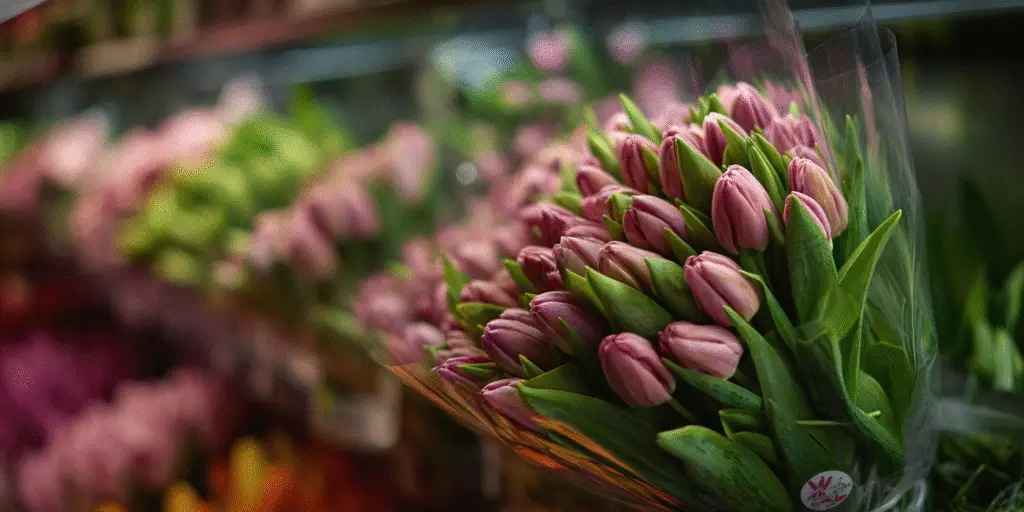
🌿 Vase life
Tulips are extremely popular as cut flowers, brightening up springtime arrangements. When cut and placed in a vase, fresh tulip flowers usually last around 5-7 days. Their vase life can vary depending on how fresh the flowers are when cut and the conditions they are kept in. One interesting aspect of tulips in arrangements is that they continue to grow a bit even after being cut – a tulip stem in water can elongate an extra inch or more, and the flower will often bend or orient itself toward light sources. This means an arrangement can change over the days as tulips move and “dance” in the vase. To maximize the vase life of tulips, start with clean, cool water in a vase and keep the arrangement in a cool room away from direct sunlight or heat sources. Re-cut the stems at an angle every day or two to help them take up water, and refresh the water frequently (daily if possible). Unlike some cut flowers, tulips generally do not need added floral preservative, in fact, they prefer just clean water. With proper care – regular fresh water and stem trimming – cut tulips will stay perky longer.
🐛 Pests and diseases
Tulips can face a few pest and disease challenges, although with proper precautions they usually grow without serious problems. One of the biggest pests for tulips are larger animals: deer and rabbits find tulip blooms appetizing and can quickly decimate a planting by eating the flower heads. In areas with deer, gardeners often need to fence in tulip beds or use repellents, or plant tulips in protected spots close to the house. Rodents (like squirrels, chipmunks, and voles) also pose a risk – they may dig up and eat tulip bulbs, especially during the fall or winter after bulbs are planted. To guard against bulb theft, some gardeners plant bulbs inside wire mesh or bulb cages buried in the ground, or interplant tulips with daffodils (daffodil bulbs are toxic and unappealing to rodents, which can help deter them). Once tulips emerge in spring, they are less likely to be dug up, but young shoots can still be nibbled by rabbits.
Tulips can also be affected by viruses and fungal diseases. Viruses can infect tulips (for example, Tulip breaking virus causes streaked or mottled patterns on the petals along with weakened growth). Any tulip showing unusual streaky color should be removed to prevent spreading a virus to other bulbs. Fungal diseases are another concern, especially in damp conditions. Botrytis fungus (known as “tulip fire”) causes brown spots on tulip leaves and petals and can make the plants rot, infected tulips should be promptly removed and destroyed to avoid spreading the infection. Bulb rot (often caused by a Fusarium fungus) is another issue that can cause tulip bulbs to decay and fail to sprout. The best prevention for these problems is to plant only healthy, disease-free bulbs in well-drained soil, avoid overhead watering, and clean up any diseased foliage or bulbs. By maintaining good garden hygiene and proper planting conditions, most tulip plantings will remain healthy and reward you with beautiful blooms each year.
FAQs
When should I plant tulip bulbs and how deep do, they go?
Tulip bulbs are best planted in the fall, about 6 to 8 weeks before the ground freezes in your area. This timing allows the bulbs to establish roots during the cool autumn weather. In terms of depth, a good rule of thumb is to plant bulbs about three times as deep as the bulb’s height. For most standard tulip bulbs, this means planting roughly 6-8 inches deep (15-20 cm) measured from the bulb’s base to the soil surface. Ensure the pointed end of the bulb faces up when planting. Space the bulbs a few inches apart (around 4-6 inches between bulbs) so they have room to grow but will still give a nice, full display when they bloom.
Do tulips come back every year or are they annuals?
Botanically, tulips are perennials – the bulbs can survive winter and bloom again year after year. However, in practice many hybrid tulips tend to bloom robustly the first spring and then produce fewer flowers in subsequent years. Factors like climate, soil conditions, tulip variety, and planting depth all influence whether a tulip will perennialize. In climates with cold winters (zones 3-7) and when bulbs are planted deep and given proper care, some tulips (especially certain Darwin hybrids and botanical species) will return for several years. But it’s common for gardeners to treat hybrid tulips as annuals, replanting new bulbs each fall to ensure a vibrant display every spring. So, while tulips can come back every year, it isn’t guaranteed unless conditions are just right.
Can I grow tulips in pots or indoors?
Yes, tulips can be grown in containers or even forced indoors, but they still require a cold dormancy period to bloom. Use a pot with good drainage and plant the bulbs in fall, as you would in the ground (pointed end up, bulbs fairly close together). Then the bulbs must be kept cold at around 35-45°F (2-7°C) for roughly 12-14 weeks. In cold winter regions, you can simply leave the planted pots outside (shielded from excessive rain to prevent rot). In warmer climates, you will need to chill the bulbs (or the planted pots) in a refrigerator for the necessary time. After the chill period, move the pot to a sunny location in spring and water it-soon the tulips will sprout and bloom. Indoors, you can “force” tulips by pre-chilling the bulbs in a fridge then potting them up in a cool, bright room until they bloom a few weeks later. Remember that potted tulips are usually a one-time display. After flowering, the bulbs are often exhausted. While you can let the foliage die back and attempt to reuse the bulbs, many people simply start with fresh bulbs each year for containers.
How do I care for tulips after they finish blooming?
After tulips finish blooming in spring, you can remove the spent flower heads by snipping off each flower stalk. This process (deadheading) prevents the plant from expending energy on seed production. However, be sure to leave all the green leaves intact. The foliage is critical for photosynthesis, which recharges the bulb for the next year. Allow the leaves to grow and fade naturally – they will turn yellow and wither a few weeks after bloom. Only once the leaves are completely yellow or brown and pull off easily should you clean them up. During this post-bloom period, continue to water the tulip occasionally (if spring rainfall is scarce) until the leaves die back, but avoid overwatering. You can also add a balanced bulb fertilizer or some compost to the soil right after flowering to help strengthen the bulb for the next season. The key is to let the tulip replenish itself by keeping the foliage healthy and active as long as possible after blooming
Are tulips poisonous to cats and dogs?
Yes, tulips are considered toxic to cats and dogs. The most toxic part of the plant is the bulb, but leaves and flowers also contain the irritating compounds. If a pet bites or ingests pieces of a tulip, they may experience drooling, vomiting, diarrhea, and signs of stomach pain. The bulb, if dug up and eaten, can cause more severe symptoms due to the higher concentration of toxins (tulipalin A and B). Fortunately, tulip poisoning in pets is rarely life-threatening, but it can make the animal quite ill and may require veterinary care. Prevent problems by keeping tulip bulbs out of reach – for example, don’t leave unplanted bulbs where a dog might snatch them, and consider fencing off tulip beds if your dog likes to dig. If you have a cat that chews on houseplants or outdoor greenery, be cautious with potted tulips or bouquets of cut tulips in the home. Always contact a veterinarian if you suspect your pet has eaten any part of a tulip, to get professional advice on treatment.
Interesting tips
- Layer your tulip plantings for a long display: When planting bulbs in the fall, consider layering different tulip varieties in the same area (or even in the same large planting hole). Place late-blooming tulip bulbs a bit deeper and early-blooming ones above them. This “lasagna planting” technique can yield a succession of blooms in one spot, extending your overall spring display by several weeks as different layers bloom in sequence.
- Plant in clusters for impact: Tulips look best when planted in groups rather than as solitary bulbs. For a natural effect, plant bulbs in informal clusters of odd numbers (5, 7, 9, or more) instead of arranging them in straight lines. A concentrated cluster of tulips creates a more striking pop of color in the spring garden and mimics how they might grow in the wild.
- Don’t cut the leaves too soon: It may be tempting to tidy up by trimming back tulip leaves right after flowering, but those leaves are feeding the bulb for next year. Always wait until the foliage has completely yellowed and dried out before removing it. This ensures that the bulb has stored enough energy to produce a strong bloom the following spring. Patience in allowing the leaves to wither naturally will pay off with healthier bulbs and better blooms.
- Use bulb cages or deterrents if rodents are a problem: If squirrels, voles, or other rodents frequently dig up your tulip bulbs, try planting the bulbs inside wire bulb cages or baskets buried in the ground. The bulbs will grow through the gaps, but the pests won’t be able to carry them off. Alternatively, you can sprinkle some crushed gravel or even red pepper flakes in each planting hole as a mild deterrent to digging. Some gardeners also intermix tulips with daffodils since rodents tend to avoid daffodil bulbs.
- Chill tulip bulbs in warm climates: Gardeners in mild-winter regions (such as parts of the South or coastal California) can still enjoy tulips by pre-chilling the bulbs. Store tulip bulbs in a refrigerator (away from fruits that emit ethylene gas) for about 8-10 weeks before planting in late fall or early winter. This artificial “winter” gives the bulbs the cold exposure they need. Once planted after chilling, the bulbs should grow and bloom normally in spring, even without a natural frost.
- Fun fact – the Tulip Mania: In the 1630s, the Netherlands experienced an infamous period called “Tulip Mania,” during which tulip bulbs became so prized that some were sold for extraordinarily high prices. Certain rare bulbs changed hands for the cost of a house or more. This early speculative bubble eventually burst, but it left behind a fascinating story in economic history. Today, tulips remain culturally significant in the Netherlands, which hosts vast tulip festivals each spring and continues to be a world leader in tulip breeding.